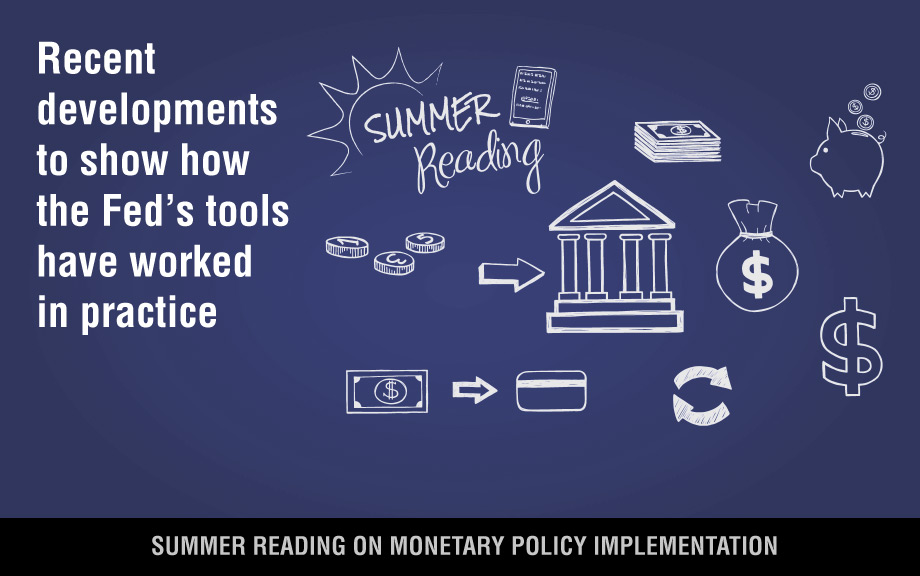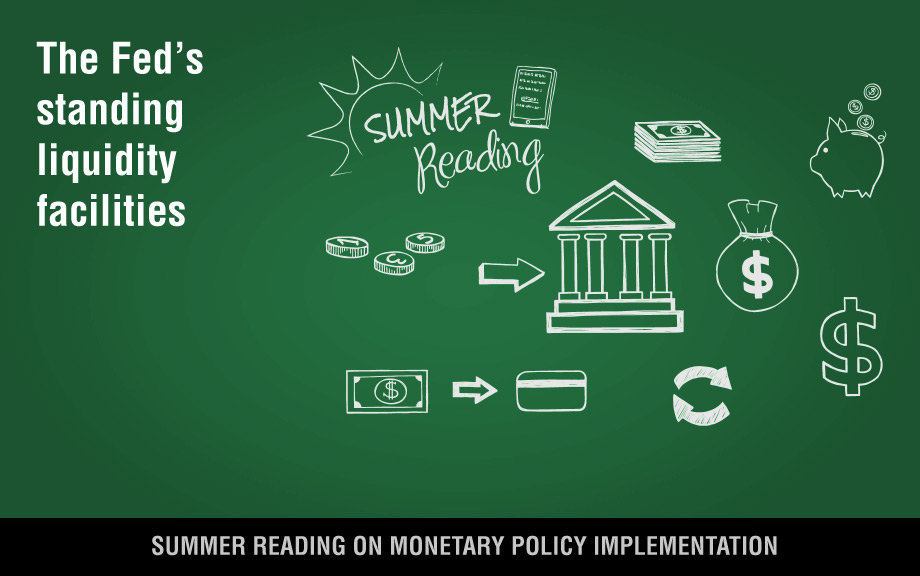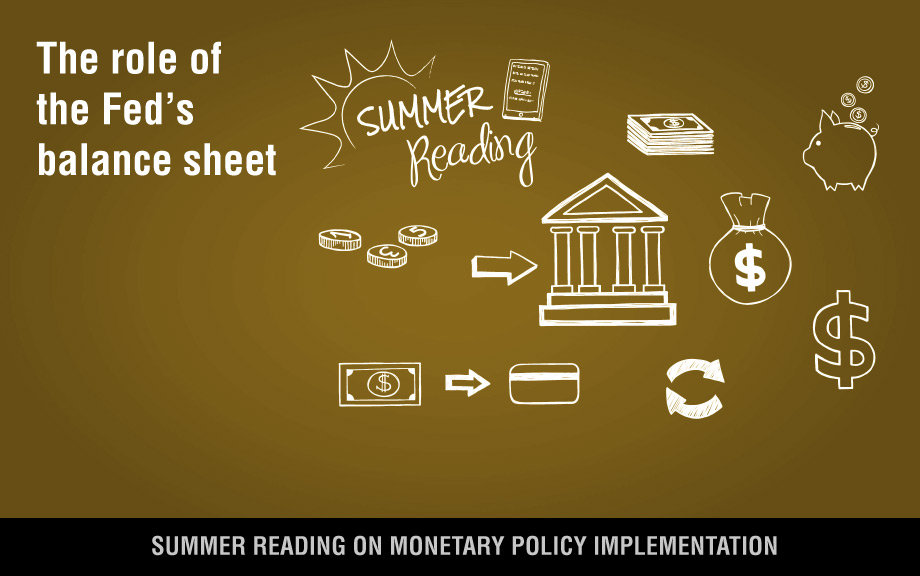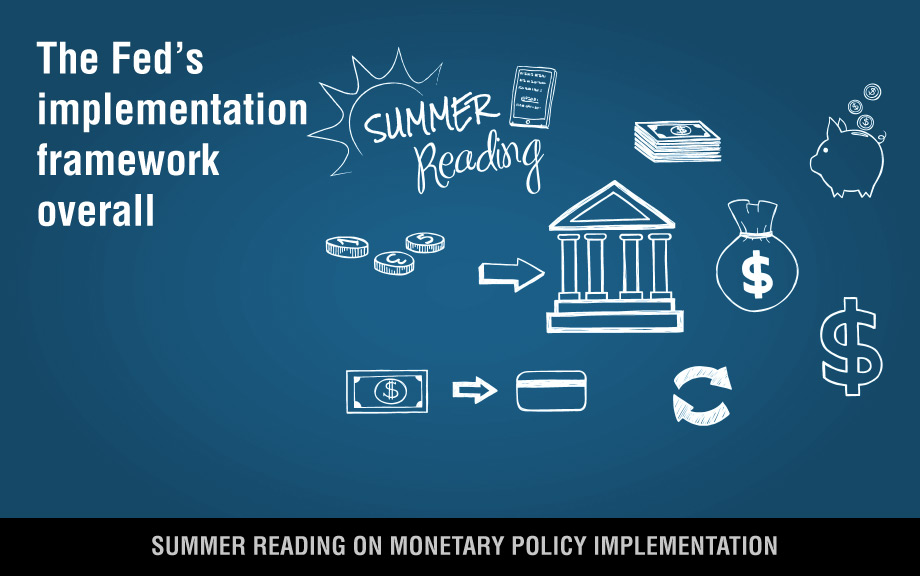A New View of Our Monetary Policy Expectations Surveys

The New York Fed’s Open Market Trading Desk (“the Desk”) is responsible for aggregating and analyzing information on financial markets and investor expectations, among its many duties. This information is central to our ability to deeply understand and explain financial market developments to policymakers. We gather market intelligence in several ways, including by speaking regularly with market participants, analyzing financial market instruments, and administering surveys.
Monetary Policy Implementation in Practice Today

In recent articles, we introduced the Fed’s policy implementation framework, the role of the Fed’s balance sheet, and the Fed’s standing liquidity facilities. In this article, we use those key concepts to discuss recent developments in monetary policy implementation and how the Fed’s tools work in practice.
The Federal Reserve’s Standing Liquidity Facilities

An ample supply of reserves—consistent with the Fed’s “floor system”—and the smooth functioning of funding markets are critical to effectively implement monetary policy. Market disruptions occasionally require the rapid provision of additional liquidity. One way to do this is through open market operations conducted with primary dealers, in which the Fed increases the reserve supply either temporarily or more permanently.
The Role of the Federal Reserve’s Balance Sheet in Monetary Policy Implementation

The Fed’s balance sheet, like any financial balance sheet, is a record of the assets acquired—either through open market operations or backstop lending—and the liabilities issued to fund those assets. So, it can be thought of as a record of monetary policy and other actions the Fed took to achieve its “dual mandate” and other responsibilities. In this article, we discuss the evolution and role of the Fed’s balance sheet in monetary policy and its implementation.
The Federal Reserve and its Monetary Policy Implementation Framework

The Federal Reserve System is the central bank of the United States. Its key entities are the Board of Governors, which is an independent federal government agency, 12 regional Federal Reserve Banks, and the Federal Open Market Committee (FOMC). The FOMC includes members of the Board of Governors, the president of the Federal Reserve Bank of New York, and four other regional Reserve Bank presidents who serve on a rotating basis. You might hear these entities more often referred to collectively as “the Fed,” for short.
Summer Reading on Monetary Policy Implementation

In the spirit of the summer season, the New York Fed’s Open Market Trading Desk (the Desk) thought it would contribute something to your summer reading list.
Key Takeaways from President Williams’s Speech at the Hoover Monetary Policy Conference

In remarks delivered at the Hoover Institution, New York Fed President John C. Williams discussed three key principles derived from monetary policy theory and experience that help guide central banks in achieving price stability.
Examining the Recent Inflation Episode, the Fed’s Response, and Effects on Markets

The rise in inflation following the COVID-19 pandemic was a global phenomenon, and it prompted many central banks to tighten monetary policy to bring inflation down. A recently published Centre for Economic Policy Research e-book, “Monetary Policy Responses to the Post-Pandemic Inflation,” provides a collection of viewpoints on the actions of central banks and their effects across various economies and markets.
Key Takeaways from Roberto Perli’s Speech on Monetary Policy Implementation

Roberto Perli, Manager of the Federal Reserve’s System Open Market Account (SOMA), spoke at the annual meeting of the National Association of Business Economics on Tuesday, October 10. He discussed monetary policy implementation, the performance of the Federal Reserve’s implementation framework over recent stress episodes, and his perspective on money markets and reserve conditions going forward.
The “How and When” of the Fed’s Balance Sheet Runoff

In May 2022, the Federal Reserve (Fed) announced that the process to reduce the size of its balance sheet would begin on June 1. With that process now underway, this post reviews the initial months of runoff. We also highlight publicly available resources that provide data to monitor the ongoing runoff of the Federal Reserve System Open Market Account (SOMA), which holds the securities acquired through open market operations.










